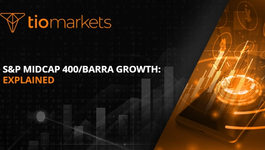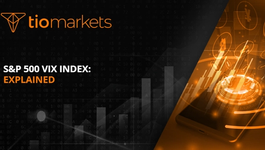Market forces: Explained
BY TIOmarkets
|August 3, 2024In the world of trading, the term 'market forces' is frequently used to describe the various factors that influence the price and availability of goods and services in a market. These forces are the invisible hand that guides the economic decisions of individuals, businesses, and governments. In this glossary entry, we will delve deep into the concept of market forces, exploring their nature, types, impact on trading, and much more.
Understanding market forces is crucial for anyone involved in trading. They dictate the dynamics of supply and demand, influence pricing, and ultimately determine the success or failure of a trade. By gaining a comprehensive understanding of market forces, traders can make more informed decisions and better anticipate market trends.
Understanding Market Forces
At the heart of any market are the forces of supply and demand. These two elements interact to determine the price of goods and services. When demand exceeds supply, prices tend to rise. Conversely, when supply exceeds demand, prices tend to fall. This is the fundamental principle of market forces.
However, market forces are not limited to supply and demand alone. They also include other factors such as government policies, market sentiment, and economic indicators. These forces can either work in tandem or in opposition to each other, creating a complex web of influences that shape the market.
The Role of Supply and Demand
Supply and demand are the primary drivers of market forces. The law of supply states that as the price of a good or service increases, the quantity supplied also increases, and vice versa. On the other hand, the law of demand states that as the price of a good or service increases, the quantity demanded decreases, and vice versa.
These two laws interact to create a market equilibrium, where the quantity supplied equals the quantity demanded at a certain price. This equilibrium price is what traders refer to when they talk about the 'market price' of a good or service.
Government Policies and Market Forces
Government policies can significantly influence market forces. Policies such as taxes, subsidies, and regulations can alter the supply and demand dynamics of a market, thereby affecting prices. For example, a tax on a particular good can decrease its supply, leading to a rise in its price.
Similarly, subsidies can increase the supply of a good, leading to a decrease in its price. Regulations, on the other hand, can either increase or decrease supply and demand, depending on their nature. Understanding the impact of government policies on market forces is crucial for traders as it can help them anticipate changes in market prices.
Impact of Market Forces on Trading
Market forces play a significant role in trading. They determine the prices at which trades are made, influence the profitability of trades, and shape the overall direction of the market. Understanding these forces can help traders make more informed decisions and improve their trading performance.
For example, if a trader anticipates that a government policy will increase the demand for a particular good, they can buy that good in anticipation of a price increase. Similarly, if a trader expects a decrease in demand due to a change in market sentiment, they can sell their holdings to avoid potential losses.
Market Sentiment and Trading
Market sentiment is a key market force that can significantly impact trading. It refers to the overall attitude of investors towards a particular market or asset. Positive market sentiment can increase demand for an asset, leading to a rise in its price. Conversely, negative market sentiment can decrease demand, leading to a fall in price.
Traders often use various tools and indicators to gauge market sentiment, such as news analysis, technical analysis, and sentiment indicators. By understanding market sentiment, traders can better anticipate market trends and make more informed trading decisions.
Economic Indicators and Trading
Economic indicators are another important market force that can influence trading. These indicators provide insights into the overall health of an economy, which can in turn influence the supply and demand dynamics of various markets.
For example, a strong economy can increase demand for goods and services, leading to a rise in their prices. Conversely, a weak economy can decrease demand, leading to a fall in prices. Traders often use economic indicators to anticipate these changes and adjust their trading strategies accordingly.
Strategies for Trading with Market Forces
Understanding market forces is only the first step in successful trading. Traders also need to develop strategies that take these forces into account. These strategies can range from simple buy-and-hold strategies to more complex strategies involving derivatives and hedging.
Regardless of the strategy used, the goal is the same: to make profitable trades by accurately predicting the impact of market forces on prices. By understanding market forces and developing effective trading strategies, traders can improve their chances of success in the market.
Buy-and-Hold Strategy
The buy-and-hold strategy is a long-term investment strategy that involves buying a security and holding it for a long period, regardless of market fluctuations. This strategy is based on the belief that in the long run, the market will provide a positive return, despite short-term volatility.
While this strategy can be effective in certain situations, it requires a deep understanding of market forces. Traders need to accurately predict the long-term impact of these forces on prices to make profitable trades.
Derivatives and Hedging
Derivatives are financial instruments that derive their value from an underlying asset. Traders use derivatives to hedge against potential losses caused by market fluctuations. For example, a trader can use a derivative to lock in a future price for a security, thereby protecting against potential price increases.
However, trading with derivatives requires a deep understanding of market forces. Traders need to accurately predict the impact of these forces on the underlying asset's price to make profitable trades. Additionally, derivatives can be complex and risky, so traders need to fully understand them before using them in their trading strategies.
Conclusion
Market forces are the invisible hand that guides the economic decisions of individuals, businesses, and governments. They dictate the dynamics of supply and demand, influence pricing, and ultimately determine the success or failure of a trade. By gaining a comprehensive understanding of market forces, traders can make more informed decisions and better anticipate market trends.
Whether you're a novice trader or an experienced professional, understanding market forces is crucial for success in the market. By understanding these forces and developing effective trading strategies, you can improve your chances of success and make more profitable trades.
Take Control of Market Forces with TIOmarkets
Now that you understand the critical role market forces play in trading, it's time to apply this knowledge with a platform that empowers you. TIOmarkets, a top-rated forex broker, offers you the opportunity to trade over 300 instruments across 5 markets, all with low fees. Join over 170,000 traders in 170 countries who have already taken the step to navigate the markets more effectively. Enhance your trading skills with our comprehensive educational resources and step-by-step guides. Ready to harness the power of market forces? Create a Trading Account today and start your journey to trading success.

Risk disclaimer: CFDs are complex instruments and come with a high risk of losing money rapidly due to leverage. You should consider whether you understand how CFDs work and whether you can afford to take the high risk of losing your money. Never deposit more than you are prepared to lose. Professional client’s losses can exceed their deposit. Please see our risk warning policy and seek independent professional advice if you do not fully understand. This information is not directed or intended for distribution to or use by residents of certain countries/jurisdictions including, but not limited to, USA & OFAC. The Company holds the right to alter the aforementioned list of countries at its own discretion.
Join us on social media

Behind every blog post lies the combined experience of the people working at TIOmarkets. We are a team of dedicated industry professionals and financial markets enthusiasts committed to providing you with trading education and financial markets commentary. Our goal is to help empower you with the knowledge you need to trade in the markets effectively.





